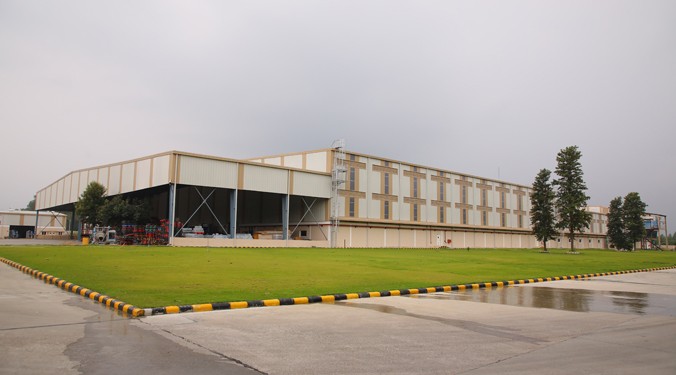HVAC in making a building green: an Indian context

Case studies to demonstrate energy savings potentials from HVAC in green buildings.
Ever since the discovery of cooling effect of liquid evaporation by Benjamin Franklin and John Hadley, to the invention of air testing apparatus by Willis Carrier, the evolution of air conditioning has only been positive in terms of the invention itself. Over the years the HVAC systems have undergone tremendous changes based on research and development, and the varying consumer trends. In context to trend changes, demands by the people and climatic conditions, HVAC became the most important commodity in the day to day life.
In the recent past, India has witnessed a rise in real estate with an inflow of major multi-national companies into the market. Hence the need for commercial buildings with air conditioning was the resultant effect of this growth. In fact, HVAC has become the major energy consumer in a building functioning when compared to other services like lighting and equipment. Due to this very reason, the necessity to provide energy efficient HVAC systems was the need of the hour.
Some of the factors that influence HVAC designing are:Climatic condition: India being a tropical country has climates varying from hot-dry, warm-humid, composite, temperate and cold. Therefore, each climate has a specific design requirement to be met for the HVAC design.
Building functioning: It includes office, retail, hotel, data centres, process industry, etc will require particular systems to meet the heat load demands respectively.
Architectural design: Building aesthetics, orientation, building envelope, etc will provide the limitation on the HVAC design.
Life cycle cost: CAPEX and OPEX the system design and functioning.
Reference standards: ECBC and ASHRAE have been some of the major benchmarks in India determining the design efficiency in a HVAC system.
Environmental impact from HVAC systemsEnergy usage: HVAC systems being the major energy guzzlers in a building, the electricity generated to power these machines has a local and global impact. The thermal power plants which feed electricity to the cities are based on coal burning, in turn causing heavy air pollution due to discharge of poisonous gases into the atmosphere.
Use of refrigerants: HVAC systems operate on the use of refrigerants such as CFC, HCFC, and HFC. Out of which the CFC and HCFC are considered to have high Ozone Depleting Potential (ODP). However, currently the CFC refrigerants (Class I) has been phased out, HCFC refrigerant (Class II) is on the verge of phasing out and the most of the HVAC manufacturers are offering HFC-based refrigerant.
Green building movement was first transcended in Great Britain through the rating system called as BREEAM in 1990, later in 2000, the LEED rating system came into existence under the US Green Building Council (USGBC) leadership. In India, green building movement was adopted by the Confederation of Indian Industries, and under the formation of Indian Green Building Council (IGBC) commenced the LEED India Rating systems, an adaptation from the LEED USGBC rating.
Currently, India ranks third among top 10 countries for LEED green buildings with 1,883 certified projects and is moving towards sustainability in a rapid pace. Industrialisation, economic boom in information technology and ‘Make in India’ have all added to this march towards sustainability. Green buildings are a roadmap to sustainable building performance to ensure lower environmental impacts from the building.
Green building designing have been conceptualised to ensure enhancing the building design over and above the conventional requirements in a building. Few examples include:
• Passive architecture – building orientation, shading devices, cross ventilation, day lighting, natural ventilation etc.
• Enhanced building envelope measures like high performance façade glazing, low thermal conductivity in wall construction, over deck insulation for roof etc.
• Energy efficient HVAC system – efficient chillers with high coefficient of performance (COP) and better integrated part load values, Variable Frequency Drives (VFD) for AHUs, pumps, and the cooling towers, variable air flow system, heat recovery wheels, use of CFC and HCFC free refrigerants.
In order to demonstrate the HVAC in green buildings, certain case studies have been illustrated below for better understanding with facts and figures.
Case study 1: Conventional design to a green design – Impact on energy consumption
A typical commercial building in Pune is considered. Conventionally a building would be of brick wall construction, under deck insulation in roof and a DGU of SHGC 0.3. On the HVAC side, standard chillers, two speed fans on cooling tower, stand efficiency motors are considered. The same building, if designed for green will have fly ash based walls, over deck roof insulation, high efficient glazing of SHGC< 0.25, high efficiency chillers, VFD in cooling towers, low approach and high efficient motors.
The project can save energy consumption up to 30 per cent by moving from a conventional design to green design with simple payback period of less than 3 years.
Case study 2: Impact from building envelope on HVAC capacity
A typical commercial building in Delhi was considered to understand the reduction in heat load by using a double glazing unit of SHGC 0.23 instead of less stringent double glazing unit of SHGC 0.3 and single glazing unit of SHGC 0.33.
Case study 3: Impact on energy savings due to new HVAC technology like radiant panels
A typical commercial building in Mumbai was analysed in the simulation software with an energy efficient variable air volume system and a radiant panel system. The increase in the overall energy savings was around 4 per cent with an attractive payback period of less than 3 years.
Conclusion
India, as a developing country has much more potential to grow in terms of better technological advances in HVAC systems, creating stringent local building standards. Integration of energy efficiency in the local norms will be a key factor to improve performance of buildings and lower energy consumptions.
Cookie Consent
We use cookies to personalize your experience. By continuing to visit this website you agree to our Terms & Conditions, Privacy Policy and Cookie Policy.









